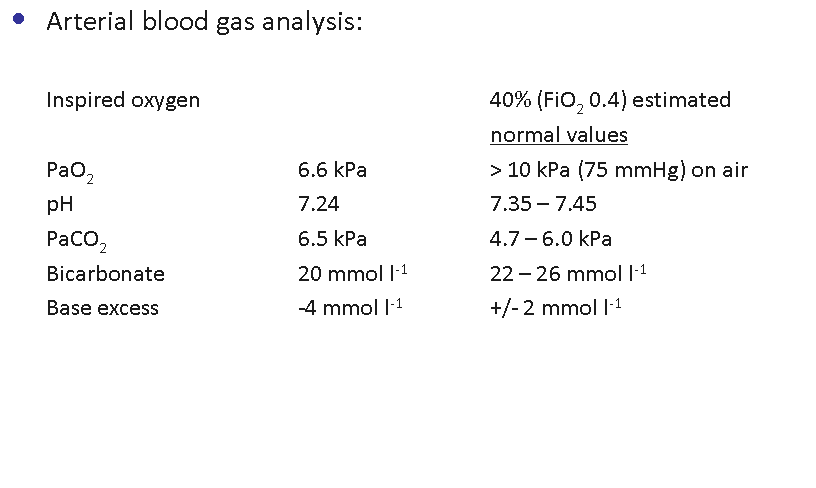
Subsequent developments

That’s not quite right. The correct approach in this given circumstance is to start CPR according to ALS guidelines which can be found in chapter 12 of the ALS manual.
If dynamic hyperinflation of the lungs is suspected during CPR, compression of the chest wall and/or a period of apnoea (disconnection of tracheal tube) may relieve gas-trapping. Although this procedure is supported by limited evidence, it is unlikely to be harmful in an otherwise desperate situation.
Ventilation with 100% inspired oxygen during CPR will be necessary, but may be difficult to give because of increased airway resistance caused by asthma. In an intubated patient give chest compressions at 100-120 min-1 and ventilations at 10 min-1.
Dynamic hyperinflation increases transthoracic impedance. In VF, consider higher shock energies for defibrillation if initial defibrillation attempts fail.
That’s not right. The correct approach in this given circumstance is to start CPR according to ALS guidelines which can be found in chapter 12 of the ALS manual.
If dynamic hyperinflation of the lungs is suspected during CPR, compression of the chest wall and/or a period of apnoea (disconnection of tracheal tube) may relieve gas-trapping. Although this procedure is supported by limited evidence, it is unlikely to be harmful in an otherwise desperate situation.
Ventilation with 100% inspired oxygen during CPR will be necessary, but may be difficult to give because of increased airway resistance caused by asthma. In an intubated patient give chest compressions at 100-120 min-1 and ventilations at 10 min-1.
Dynamic hyperinflation increases transthoracic impedance. In VF, consider higher shock energies for defibrillation if initial defibrillation attempts fail.
That’s right. The correct approach in this given circumstance is to start CPR according to ALS guidelines which can be found in chapter 12 of the ALS manual.
If dynamic hyperinflation of the lungs is suspected during CPR, compression of the chest wall and/or a period of apnoea (disconnection of tracheal tube) may relieve gas-trapping. Although this procedure is supported by limited evidence, it is unlikely to be harmful in an otherwise desperate situation.
Ventilation with 100% inspired oxygen during CPR will be necessary, but may be difficult to give because of increased airway resistance caused by asthma. In an intubated patient give chest compressions at 100-120 min-1 and ventilations at 10 min-1.
Dynamic hyperinflation increases transthoracic impedance. In VF, consider higher shock energies for defibrillation if initial defibrillation attempts fail.






